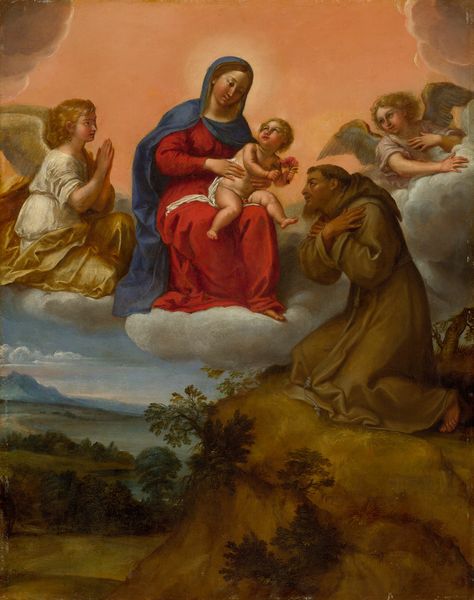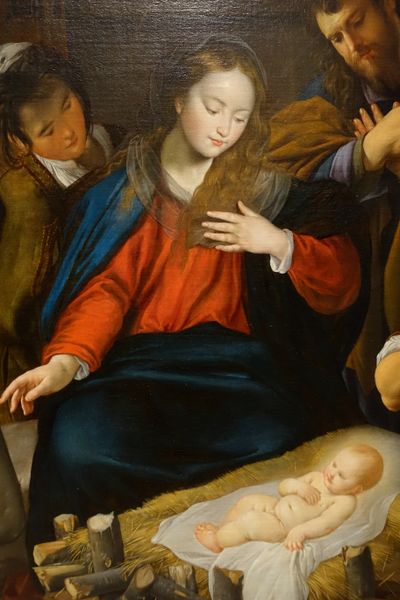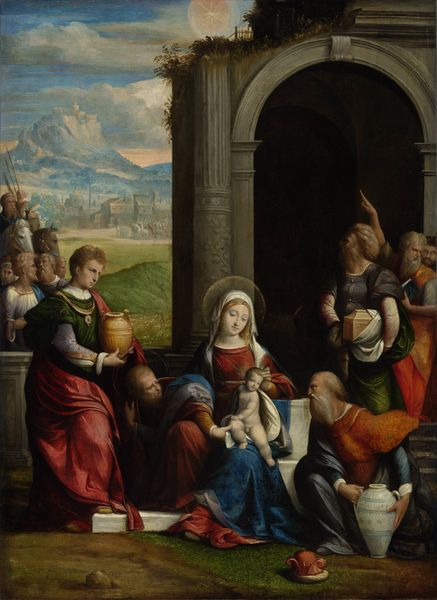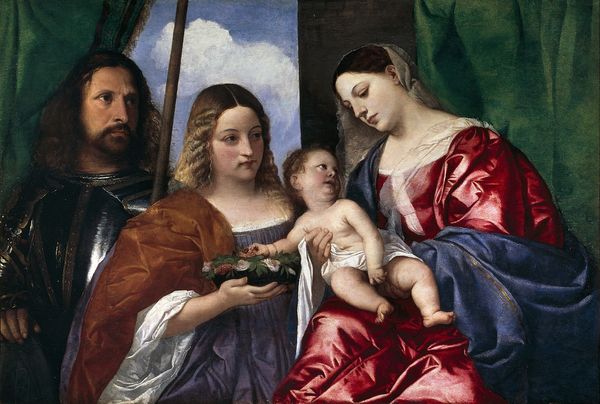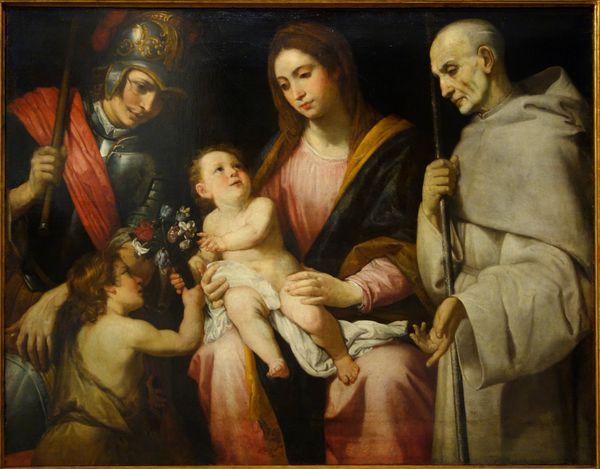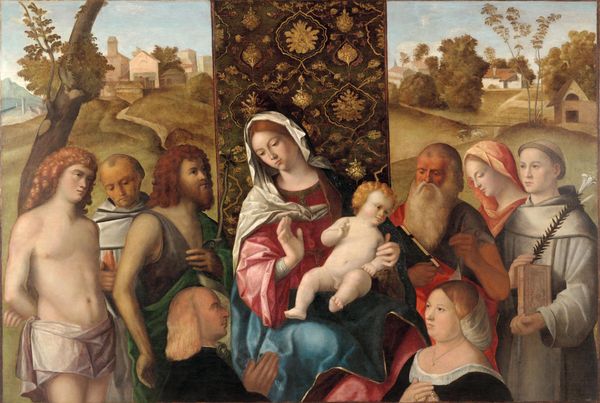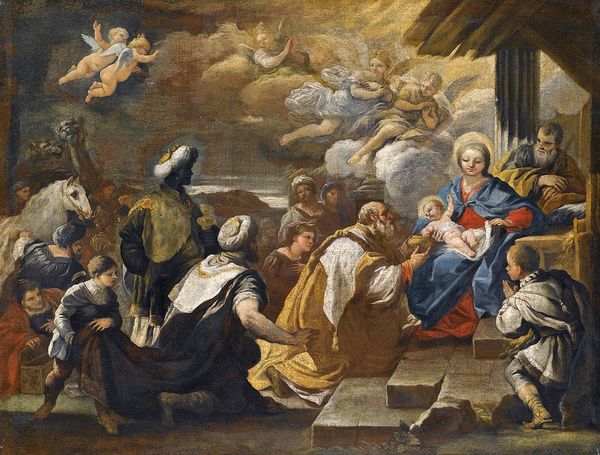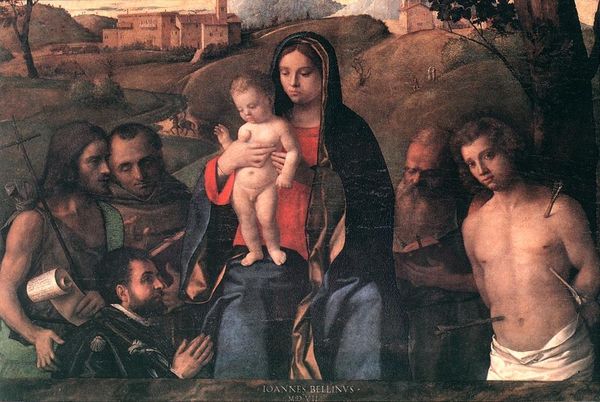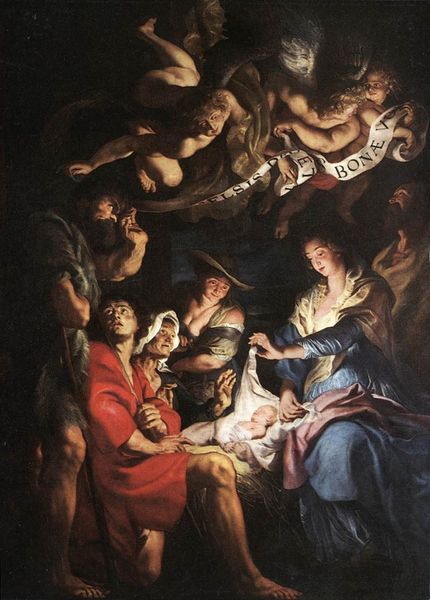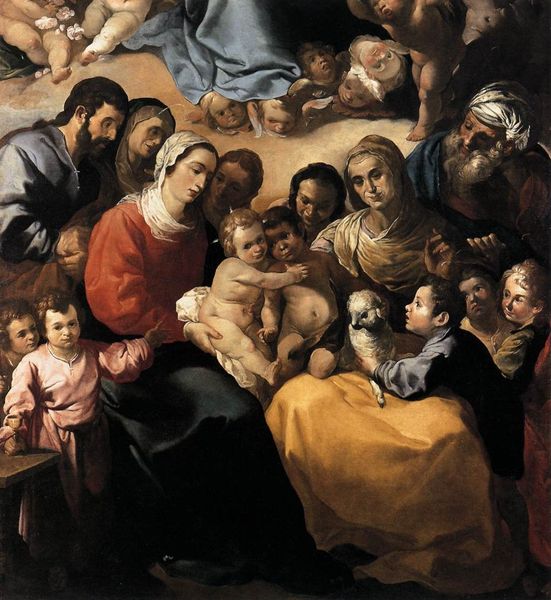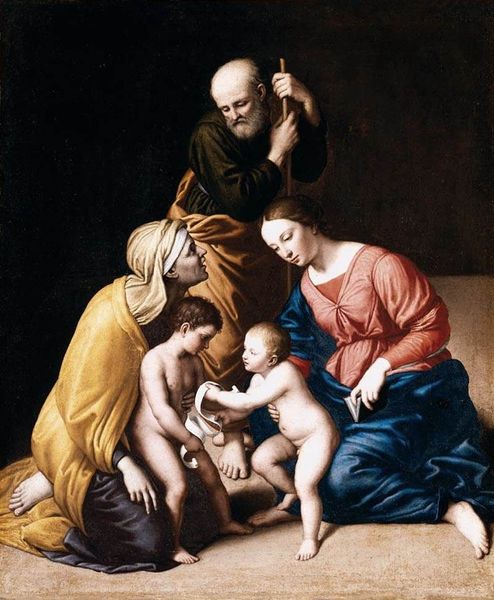
The Parish Priest Da Ponte in front of the Virgin, Saint Mark, Saint Sylvester and Saint James 1575
0:00
0:00
painting, oil-paint
#
portrait
#
high-renaissance
#
character portrait
#
painting
#
oil-paint
#
figuration
#
group-portraits
#
history-painting
#
italian-renaissance
Copyright: Public domain
Curator: Looking at this artwork, I'm struck by the slightly unsettling combination of serenity and awkwardness. The figures are clearly meant to convey peace, yet there's something about the arrangement that feels…stilted? Editor: Indeed. We are observing "The Parish Priest Da Ponte in front of the Virgin, Saint Mark, Saint Sylvester and Saint James," painted around 1575 by Palma il Giovane, a piece rendered with oil on canvas. Its historical context really informs what you're observing in its staging. Curator: Ah, Palma il Giovane. Of course, now that you mention it, the almost theatrical staging makes more sense. But focusing on what strikes the eye first—the colour palette feels restrained. What's holding my attention is the contrast of whites in the figures’ garments, juxtaposed against the darker background. And it looks like everyone’s crammed in, aren’t they? Editor: Group portraits of this era frequently positioned religious figures alongside members of the elite. Think about what that says of Venetian society at this time. Who has access to divine blessing and favour? Palma presents an ideal, yes, but it is one shaped by tangible, social concerns. Curator: That makes me question the power dynamics here. Is the priest meant to appear humble, positioned at the edge? Or is he the linchpin, bringing together the mortal and divine? I see a visual rhythm created by the figures’ faces; their gazes converge toward the child—the painting's clear focal point. Editor: Consider the context of Venice in the late 16th century; still a Republic, yet increasingly conscious of the shifting tides of power elsewhere in Europe. These idealized, somewhat static depictions served to legitimize specific power structures. Commissioned works like this were, at the end of the day, savvy pieces of political communication. Curator: Even with that, there's something universal in the gaze. Setting the religious meaning aside for a moment, everyone is trying to capture some form of the future embodied in the child; but they look constrained. It’s quite unsettling. Editor: So while you're reading that unease purely through the visual structure of the painting, I'm understanding it through what was happening at the time it was made. Either way, perhaps that unease speaks most eloquently to us now, centuries later. Curator: Ultimately, this journey reminds us that analyzing an artwork benefits greatly from merging art theory with an understanding of its history.
Comments
No comments
Be the first to comment and join the conversation on the ultimate creative platform.
